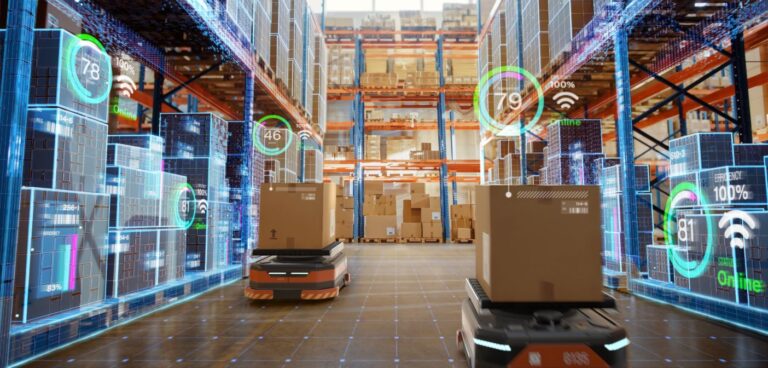Revolutionising Efficiency: How Computer Vision Solutions Propel Warehouse Automation - assert-ai/nitin-jain GitHub Wiki
Summary: In summary, computer vision is transforming warehouse automation by significantly boosting efficiency and accuracy. From real-time inventory management and speedy order fulfilment to enhanced safety and meticulous quality control, this technology is revolutionising warehouse operations.

In the world of warehouse automation, technological advancements have ushered in a new era of efficiency and accuracy. At the forefront of these innovations is computer vision, a technology that’s rapidly transforming warehouse operations. Warehouse automation technology to boost efficiency, powered by computer vision, is revolutionising the industry, streamlining processes, and boosting productivity like never before.
Introduction
Warehouse automation is transforming the logistics landscape, offering unprecedented efficiency and accuracy. One of the most significant advancements in this field is the integration of computer vision solutions. This cutting-edge technology is reshaping how warehouses operate, providing real-time data, reducing errors, and optimising overall productivity. By enabling machines to interpret and understand visual information, computer vision is enhancing warehouse automation in remarkable ways.
Enhancing Inventory Management
One of the most significant impacts of computer vision in warehouse automation is on inventory management. Traditional methods of inventory tracking are prone to errors and inefficiencies. However, with computer vision, cameras and sensors can continuously monitor stock levels in real-time. According to a report by Deloitte, the adoption of advanced technologies, including computer vision, can reduce inventory errors by up to 30%. This accuracy ensures that warehouses maintain optimal stock levels, reducing the risk of overstocking or stockouts.
Improving Order Fulfilment
Order fulfilment is another critical area where warehouse automation technology shines. Computer vision systems can quickly and accurately identify items, sort them, and even guide robotic arms to pick and place products. This level of precision ensures that orders are fulfilled faster and with fewer mistakes, leading to higher customer satisfaction. According to a report by McKinsey & Company, automated warehouses can increase productivity by up to 25% and reduce labour costs by 20%.
Ensuring Safety and Security
Warehouse environments can be hazardous, with risks of accidents and theft. Computer vision enhances safety and security by monitoring activities and identifying potential threats such as spills, obstructions, or unauthorised personnel. AI-powered cameras can detect unsafe behaviours, such as improper handling of heavy items, and alert supervisors in real-time. Moreover, computer vision systems can track and record unauthorised access, significantly reducing the risk of theft and ensuring a safer workplace.
Streamlining Quality Control
Maintaining product quality is paramount in warehouse operations. Computer vision technology is instrumental in quality control by inspecting products for defects or inconsistencies. Automated inspection systems can quickly and accurately detect issues that might be missed by human eyes. This technology ensures that only high-quality products reach the market, enhancing customer satisfaction and reducing returns. Companies utilising computer vision for quality control have reported a 15% decrease in defective products.
Conclusion
The integration of computer vision in warehouse automation is no longer a luxury but a necessity for staying competitive. By enhancing inventory management, improving order fulfilment, ensuring safety, and streamlining quality control, computer vision solutions are propelling warehouse automation to new heights. As more companies adopt these technologies, the warehouse of the future is becoming increasingly efficient, accurate, and safe.